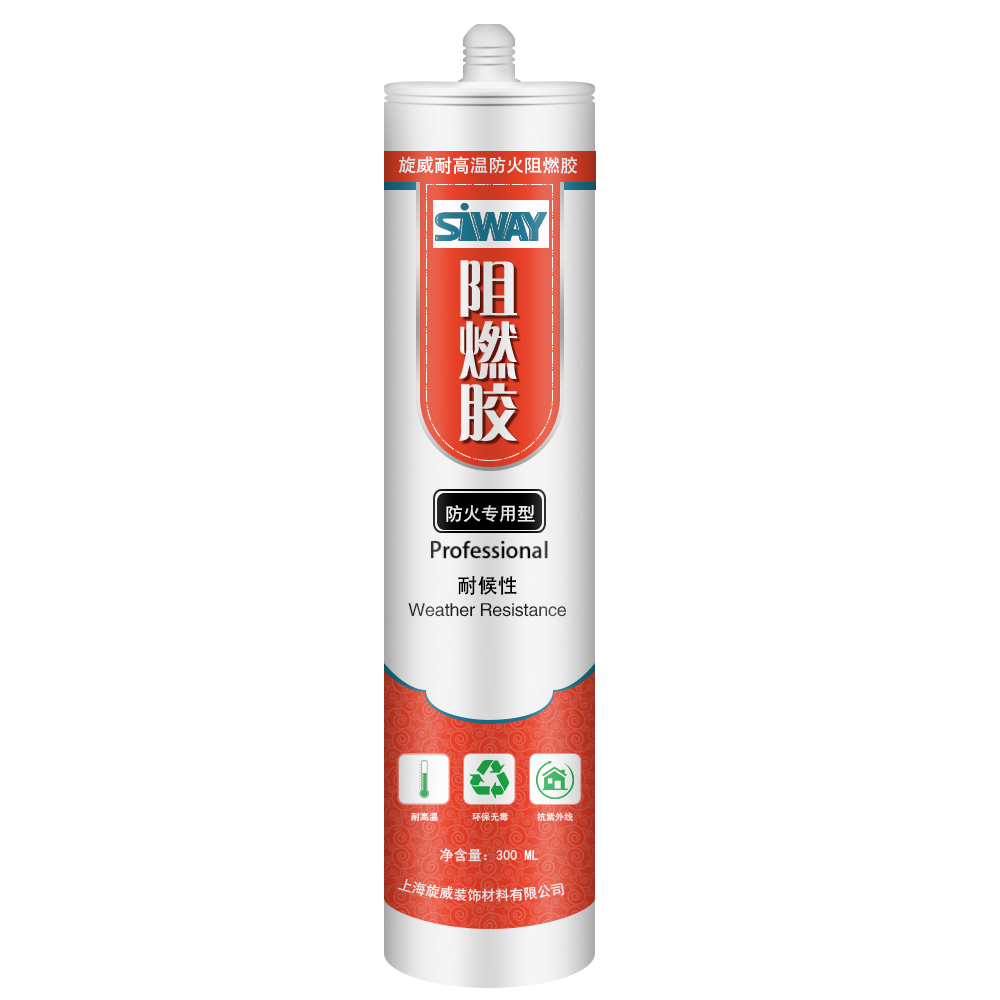Factory best selling SV-9300 Fire Resistant Silicone Sealant to The Swiss Factories
Short Description:
Description SV – 9300 Fire resistant silicone sealant is a one-component, neutral-curing silicone sealant exhibiting superior performance in applications where sealing openings in walls and floors are needed to control the spread of fire, smoke, toxic gasses, and water during fire conditions. Where to use It is an ideal material designed for use in fire-stop systems for through penetrations and joints. This product excels in applications where greater water resistance is required e.g. ...
It is our responsibility to meet your needs and efficiently serve you. Your satisfaction is our best reward. We are looking forward to your visit for joint growth for Factory best selling SV-9300 Fire Resistant Silicone Sealant to The Swiss Factories, All the opinions and suggestions will be greatly appreciated! The good cooperation could improve both of us into better development!
Description
SV – 9300 Fire resistant silicone sealant is a one-component, neutral-curing silicone sealant exhibiting superior performance in applications where sealing openings in walls and floors are needed to control the spread of fire, smoke, toxic gasses, and water during fire conditions.
Where to use
It is an ideal material designed for use in fire-stop systems for through penetrations and joints. This product excels in applications where greater water resistance is required e.g. curtain wall, building facade, expansion/pipe and cable joints.
Key Features
1. 100% silicone
2. Excellent weatherproofing and waterproofing
3. Low gas transmission rate
4. With highly efficient redundant
Basic Application
- Building fire seam sealed
- Building facade
- cable joints
Technical data sheet
Certification
GB/T 24267-2009
Color
Black
Package
300ml in cartridge * 24 per box
Shelf life
12 months
Note
If you want the TDS or MSDS or other details, please contact with our sales person.
What is CEMENT BOARD? What does CEMENT BOARD mean? CEMENT BOARD meaning – CEMENT BOARD definition – CEMENT BOARD explanation.
Source: Wikipedia.org article, adapted under https://creativecommons.org/licenses/by-sa/3.0/ license.
cement board is a combination of cement and reinforcing fibers formed into 4 foot by 8 foot sheets (or 3 foot by 5 foot sheets), 1/4 to 1/2 inch thick that are typically used as a tile backing board. Cement board can be nailed or screwed to wood or steel studs to create a substrate for vertical tile and attached horizontally to plywood for tile floors, kitchen counters and backsplashes. It can be used on the exterior of buildings as a base for exterior plaster (stucco) systems and sometimes as the finish system itself.
Cement board adds impact resistance and strength to the wall surface as compared to water resistant gypsum boards. Cement board is also fabricated in thin sheets with polymer modified cements to allow bending for curved surfaces.
Cement boards are mainly cement bonded particle boards and cement fibre. Cement bonded particle boards have treated wood flakes as reinforcement, whereas in cement fibre boards have cellulose fibre, which is a plant extract as reinforcement. Cement acts as binder in both the cases. The fire resistance properties of cement bonded blue particle boards and cement fibre boards are the same. In terms of load-bearing capacity, cement-bonded particle boards have higher capacity than cement fibre boards. Cement particle boards can be manufactured from 6 mm to 40 mm thickness making it ideally suitable for high load bearing applications. These boards are made of a homogeneous mixture and hence are formed as single layer for any thickness. Cement fibre boards are more used in decorative applications and can be manufactured from 3 mm to 20 mm thickness. Fibre boards are made in very thin layers, making it extremely difficult to manufacture high thickness boards. Many manufacturers use additives like mica, aluminium stearate and cenospheres in order to achieve certain board qualities. Typical cement fiber board is made of approximately 40-60% of cement, 20-30% of fillers, 8-10% of cellulose, 10-15% of mica. Other additives like above mentioned aluminium stearate and PVA are normally used in quantities less than 1%. Cenospheres are used only in low density boards with quantities between 10-15%. The actual recipe depends on available raw materials and other local factors.
As a tile backing board, cement board has better long-term performance than paper-faced gypsum core products because it will not mildew or physically break down in the continued presence of moisture or leaks. Cement board is not actually waterproof, but it is highly resistant to absorbing moisture and has excellent drying properties. In areas continually exposed to water spray (i.e. showers) a waterproofing barrier is usually recommended behind the boards or as a trowel-applied product to the face of the boards behind the finish system.
One major disadvantage of cement board is the weight per square foot. It is approximately twice that of gypsum board, making handling by one person difficult. Cutting of cement board must also be done with carbide-tipped tools and saw blades. Due to its hardness, pre-drilling of fasteners is often recommended. Finally, cement board is initially more expensive than water resistant gypsum board but may provide better long term value.
Cement board is hung with corrosion resistant screws or ring-shank nails. Cement board has very little movement under thermal stress, but the boards are usually installed with a slight gap at joints in shower pans, bathtubs, and each other. These joints are then filled with silicone sealant or the manufacturer’s taping compounds before applying a finish. The filled joints are taped like conventional gypsum board, but with fiberglass tapes that provide additional water resistance. Combined with a water impermeable finish, cement board is a stable, durable backing board.
https://www.instagram.com/slikonkalip/
Whatsapp: 0543 291 61 86
Silikon Kalıp Silikon Kalıp Faturalı Satış ↔Kokulutaş ve Kalıp , Süsleme Malzemeleri , Akrilik Boya






